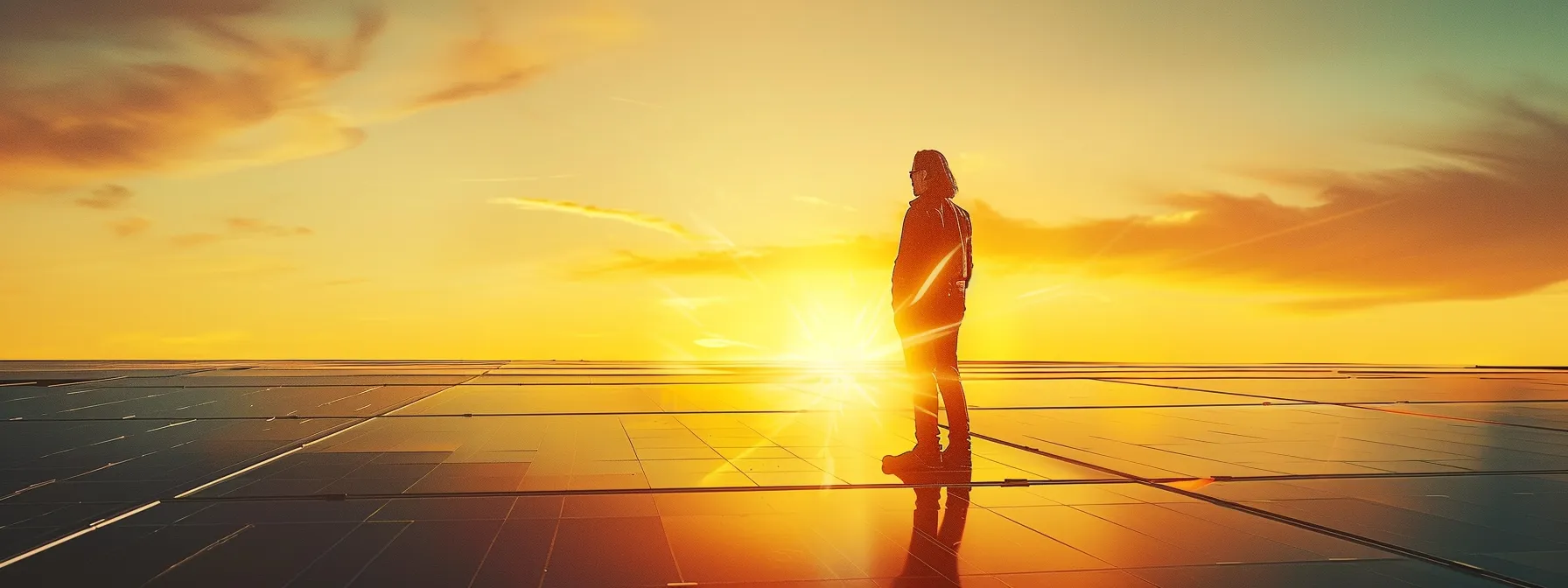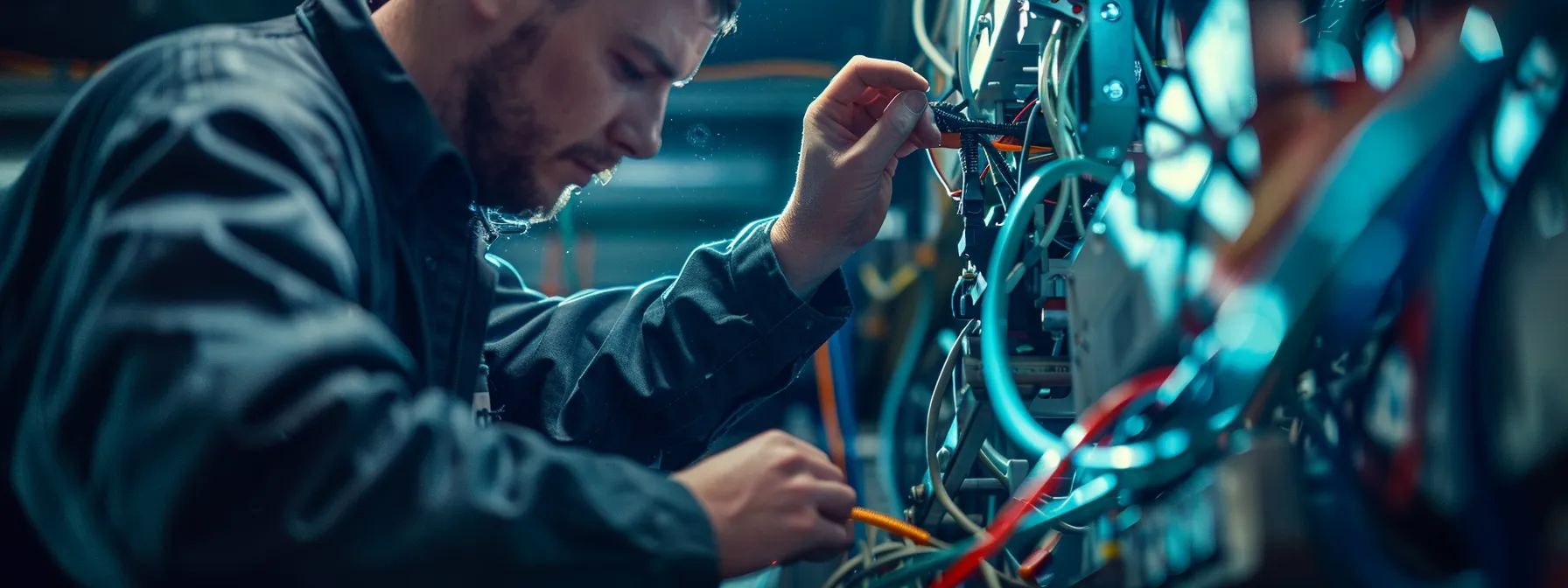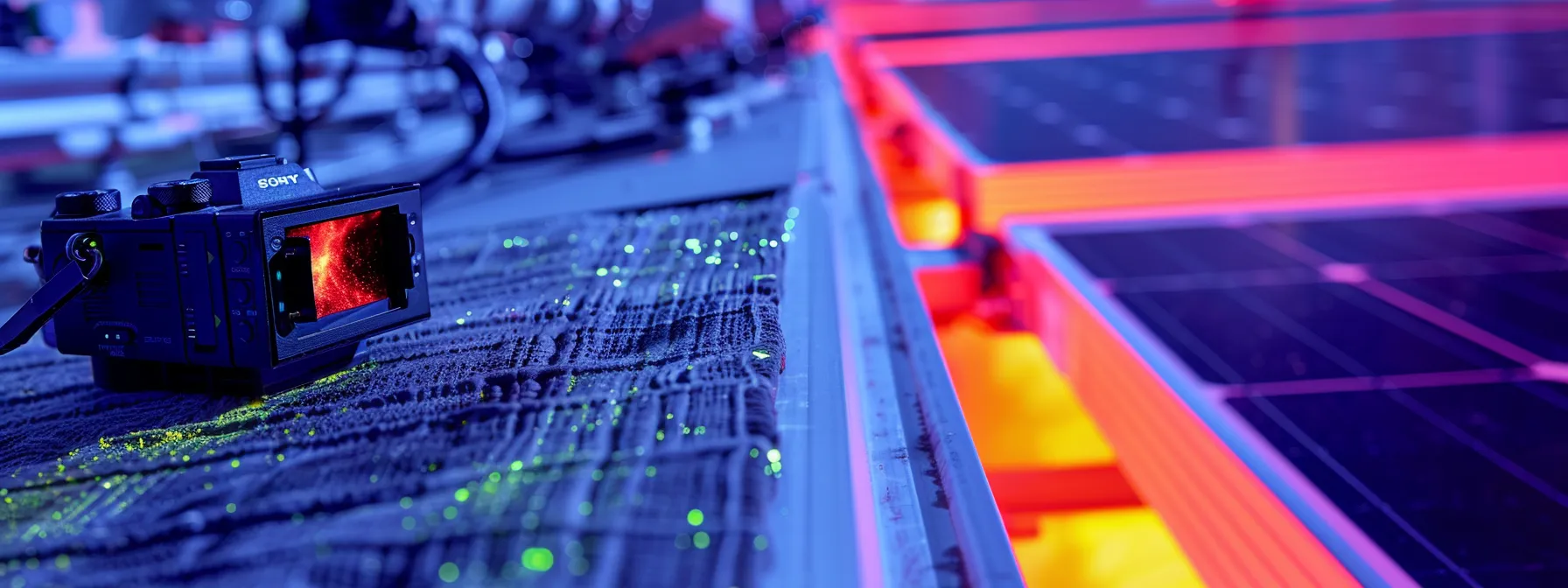Are your solar panels underperforming due to common issues? This guide will tackle typical problems such as low voltage output, inverter malfunctions, and wiring faults. Readers will learn practical troubleshooting tips and efficient solutions to enhance their solar energy systems. By addressing these challenges, users can ensure their panels operate at peak efficiency, ultimately saving money and maximizing energy output. Get ready to solve issues like dust buildup and faulty solder connections, and protect your investment on the roof from unnecessary damage.
Key Takeaways
- Regular monitoring of solar panel output helps identify performance issues early on
- Cleaning panels prevents dirt buildup that can reduce energy production significantly
- Inspecting electrical connections is crucial for maintaining system efficiency and preventing power losses
- Using thermal imaging detects hot spots that can lead to decreased energy output and damage
- Scheduling routine maintenance checks ensures optimal performance and prolongs the lifespan of solar systems
Identifying Common Solar Panel Issues

Identifying common solar panel issues is essential for maintaining optimal energy production and system efficiency. Recognizing drops in energy output can signal underlying problems, while spotting physical damage to panels is crucial for timely solar panel repair. Additionally, interpreting alerts from the solar inverter or charge controller can guide effective troubleshooting actions. Snow accumulation can also impact system performance, making awareness of these factors vital for homeowners and businesses alike.
Recognizing Drops in Energy Production
Recognizing drops in energy production is vital for ensuring solar panels operate at peak efficiency. Various factors can contribute to a decrease in electrical output, such as dirt accumulation on the panels, which can obstruct sunlight and reduce current flow. Additionally, shadows cast by nearby trees or buildings can significantly impact the system’s performance, leading to lower energy generation and contributing to potential power outages.
Homeowners and businesses should monitor their solar energy systems to detect any unusual fluctuations in energy production. Regular system checks, including observing alerts from solar inverters, can help identify issues quickly. By maintaining a clean, unobstructed solar panel environment, users can maximize energy output and prevent disruptions in service related to the electrical grid:
- Identify signs of decreased energy output.
- Inspect for dirt and shadowing issues on solar panels.
- Monitor alerts and performance through inverters.
- Ensure regular maintenance for optimal results.
Spotting Physical Damage to Panels
Spotting physical damage to solar panels is crucial for maintaining the efficiency of solar power systems. Homeowners should routinely inspect their panels for signs of cracks, chips, or delamination, as these issues can obstruct sunlight and significantly reduce energy output. A damaged panel not only hampers performance but may also pose long-term risks, making early detection essential for optimal system functionality.
If a homeowner notices physical damage, it is advisable to consult a qualified electrician for a thorough assessment. Delaying repairs can worsen the problem and lead to costly replacements down the line. By being proactive and addressing issues with dirty solar panels or physical impairments swiftly, users can ensure their solar energy systems remain reliable and efficient, ultimately maximizing their energy savings.
Interpreting System Alerts and Warnings
Interpreting system alerts and warnings from a photovoltaic system is essential for maintaining its efficiency. Homeowners should familiarize themselves with the indicators provided by their inverter or monitoring software. For instance, error codes related to grounding issues or performance drops could signal the need for a multimeter inspection to assess electrical connections and panel functionality effectively.
Moreover, specific alerts may arise following severe weather events, such as hail storms, when physical damage to panels might occur. By promptly addressing these warnings and conducting thorough inspections, users can prevent minor issues from escalating into costly repairs. Being proactive in interpreting these alerts will help ensure the solar energy system continues to operate smoothly and efficiently, maximizing the benefits of solar energy investment.
Sometimes, panels fail to deliver the power one expects. Understanding how to troubleshoot low power output can change everything for your energy needs.
Troubleshooting Low Power Output

Troubleshooting Low Power Output
Troubleshooting low power output is essential for maintaining solar panel efficiency. Key steps include assessing shading and obstructions that can impede sunlight absorption, cleaning panels to optimize performance, and inspecting electrical connections to ensure proper voltage transfer from direct current sources. Each of these topics focuses on practical solutions that can enhance energy generation and system functionality.
Assessing for Shading and Obstructions
Assessing shading and obstructions is critical for optimizing solar panel performance. Users may need to evaluate the angle of their solar panels to ensure they receive maximum sunlight throughout the day. Over time, nearby trees or buildings might grow taller or shift in position, casting shadows that block sun exposure. This can lead to wear on solar modules and decreased energy output, necessitating regular assessments to mitigate these effects.
Obstructions can also arise from debris, dirt, or physical damage, such as delamination of the solar panel surface. Users should check for signs of corrosion along electrical connections or diode failure, which can significantly impact energy transfer efficiency. By addressing these issues promptly, property owners can maintain optimal system functionality and prevent potential energy loss, ultimately enhancing the long-term benefits of their solar investment.
Cleaning Panels for Optimal Performance
Cleaning solar panels is essential to maintain optimal performance and energy output. Over time, dirt, dust, and debris can accumulate on the surface, blocking sunlight and reducing efficiency. Regular cleaning ensures that each panel receives the maximum amount of sunlight, directly impacting energy production measured in watts. Homeowners should consider the best methods for cleaning, including using soft brushes and non-abrasive solutions, to avoid damaging the panel surface.
Knowledge of proper cleaning techniques can significantly enhance the lifespan of solar panels and their associated energy storage systems. A thorough inspection of wires and connections during cleaning can also reveal potential issues that could affect power output. By addressing dirt and inspecting all components regularly, users can ensure that their solar energy systems function at peak efficiency, leading to long-term savings and reliable energy production.
Inspecting Electrical Connections
Inspecting electrical connections is a critical step in troubleshooting low power output in solar panel systems. Proper connections ensure a reliable power supply, which directly impacts system performance and energy efficiency. Electrical components, such as circuit breakers and connections to the monitoring system, need to be regularly checked for any signs of wear or corrosion, as even minor issues can disrupt power flow and reduce renewable energy generation.
Furthermore, environmental factors like pollen can accumulate around connections, potentially leading to faulty circuitry. Regular inspections and maintenance of wiring and connectors can prevent unexpected power losses and enhance the overall longevity of the solar system. Homeowners should incorporate detailed visual inspections into their routine to confirm all connections are tight and free from damage:
- Check circuit breakers for proper functionality.
- Inspect all wiring for corrosion and damage.
- Ensure connections to the monitoring system are secure.
- Clean any debris, such as pollen, that may obstruct electrical components.
Low power output can often point to deeper issues within the system. The next step is understanding how to fix inverter malfunctions that may be causing trouble.
Resolving Inverter Malfunctions

Diagnosing common inverter problems is essential for maintaining a solar panel system’s efficiency. This section addresses how to reset and reboot the inverter, ensuring optimal functionality and maximum power point tracking. It will also discuss signs indicating when inverter replacement may be necessary for continued sustainable energy production and reduced carbon footprint. Each topic aims to provide practical insights for effective troubleshooting.
Diagnosing Common Inverter Problems
Diagnosing common inverter problems involves identifying signs of failure that can disrupt the function of a solar power system. One of the most critical issues to flag is a short circuit, which can halt the flow of electric current, affecting overall energy production. Homeowners should observe the inverter’s display for warning lights that indicate malfunctions and ensure connections remain secure, especially if the system has recently faced severe weather conditions.
Regular inspections of the inverter can help prevent energy losses and maintain system efficiency. Users can look for unusual noises or overheating, which are often indicators of deeper issues. If these symptoms arise, consulting with a qualified technician is advisable to assess the situation, ensuring the solar power system continues to operate optimally and meets energy demands effectively.
Resetting and Rebooting the Inverter
Resetting and rebooting the inverter is a critical step in resolving inverter malfunctions in solar energy systems. Homeowners should regularly check the inverter for error codes, which often indicate the need for a reset. This process can restore functionality and ensure the solar photovoltaic system continues to optimize energy generation efficiently. To perform a reset, users must first turn off the inverter’s power and wait for a brief period before turning it back on, which can also help clear issues related to surges from wind or storms that may impact performance.
In addition, it is essential to inspect the fuse components of the inverter during the reboot process. A blown fuse can prevent the solar cell system from functioning correctly and can often be replaced easily. By keeping an eye on the inverter’s performance, addressing resets promptly, and replacing any damaged components, users can ensure their solar energy systems work efficiently and effectively, minimizing downtime and maximizing energy production:
- Check the inverter’s display for error codes.
- Turn off the power, wait, and then restart the inverter.
- Inspect the fuse for damages and replace if necessary.
- Monitor the system for any further signs of malfunction.
Determining When Inverter Replacement Is Necessary
Determining when inverter replacement is necessary involves careful evaluation of the inverter’s performance and longevity. If the system frequently experiences troubleshooting issues, such as overheating or error codes, it may indicate a deeper malfunction that could compromise the efficiency of the entire solar power system. Regular solar panel maintenance can help identify these problems early; however, persistent issues that affect energy output signal the need for a professional assessment and potential replacement to ensure optimal performance after solar panel installation.
Additionally, structural concerns such as a damaged junction box or water infiltration can exacerbate inverter failures. If these components demonstrate significant wear or if signs of electrical pressure are detected, replacing the inverter becomes crucial to maintaining the system’s overall reliability. Timely inverter replacement not only enhances energy generation but also safeguards the investment made in solar energy, ensuring that property owners continue to benefit from clean, renewable power.
The inverter is just one part of the system that can falter. Next, attention must turn to the wiring and connections, where unseen faults can disrupt the flow of energy.
Addressing Wiring and Connection Faults

Addressing wiring and connection faults is critical for ensuring the efficiency of solar energy systems. This section will cover identifying loose or corroded wires, which can disrupt power flow, followed by methods for safely repairing electrical issues. Lastly, it will emphasize the importance of consulting a professional electrician when necessary. With SolarAI Solutions, homeowners can explore Finance Options when they decide to Buy Solar, making maintenance and repair straightforward and accessible.
Identifying Loose or Corroded Wires
Identifying loose or corroded wires is essential for maintaining a solar panel system‘s efficiency and reliability. Loose connections can lead to energy flow interruptions, significantly impacting overall performance. Regular inspections of wiring, especially at junctions and connectors, can reveal any signs of wear or corrosion that may hinder power distribution. Being proactive in this assessment enables homeowners to address issues before they escalate into major complications.
Incorporating periodic checks of electrical connections not only preserves energy output but also extends the lifespan of the solar system. Observing visual signs such as frayed wires or discoloration can indicate corrosion, which should be addressed immediately to prevent further deterioration. Consulting a qualified electrician for repairs or replacements is advisable when significant issues are detected, ensuring that the solar energy system remains efficient and effective for years to come.
Safely Repairing Electrical Issues
Safely repairing electrical issues in solar panel systems is vital for maintaining overall efficiency and reliability. Homeowners should prioritize turning off the power supply to the system before attempting any repairs. This step ensures personal safety and prevents further damage during the inspection and fixing process. If corrosion or loose connections are identified, using appropriate tools and materials for repair is essential to ensure long-lasting connections that can withstand environmental conditions.
If electrical issues persist after initial repairs, consulting a qualified electrician is advisable to conduct a comprehensive assessment. Professionals can identify underlying problems that may not be immediately visible, ensuring a thorough solution is implemented. By taking these proactive measures, property owners can protect their investment in solar energy, ensuring peak performance and a reliable power supply from their solar panel systems:
- Turn off the power supply before repairs.
- Inspect for corrosion and loose connections.
- Use the right tools and materials for safe repairs.
- Consult a qualified electrician for persistent issues.
Consulting a Professional Electrician
Consulting a professional electrician is essential for resolving complex wiring and connection faults in solar energy systems. Experienced electricians can accurately diagnose issues, ensuring that repairs or replacements are performed safely and effectively. This expertise is particularly valuable when dealing with hidden electrical problems that may not be immediately visible, which could lead to significant energy losses.
Moreover, hiring a qualified electrician can provide peace of mind and assurance that the solar panel system operates at peak efficiency. These professionals understand the nuances of solar technology and can ensure all components function together seamlessly. By entrusting electrical repairs to an expert, homeowners can maximize their solar investment and maintain a reliable power supply:
- Identify wiring issues and assess system performance.
- Ensure safety during electrical repairs.
- Leverage professional expertise for complex problems.
- Maximize energy efficiency with proper installation and maintenance.
Wiring issues can lead to more than just low power. Addressing these problems quickly can prevent hot spots from forming and keep the system running smoothly.
Preventing and Fixing Hot Spots

Understanding the causes of hot spots in solar panels is crucial for maintaining system efficiency. This section will explore how thermal imaging can effectively detect these issues, enabling quick identification of problem areas. Furthermore, it will address methods for repairing or replacing affected cells, ensuring optimal performance and longevity of solar power systems. Each topic provides practical solutions to enhance overall energy production.
Understanding Causes of Hot Spots
Hot spots in solar panels occur when there is an uneven distribution of heat caused by various factors. Common issues leading to hot spots include shading from nearby objects, dirt accumulation on the panels, and manufacturing defects. These hot spots can result in decreased energy production and even damage to the solar cells, highlighting the need for regular inspections and maintenance to identify these areas before they escalate into more severe problems.
In addition, environmental factors such as debris or vegetation growth can obstruct sunlight, leading to localized heating on specific cells. Taking proactive measures, such as maintaining a clean installation and ensuring proper panel alignment, can prevent the formation of hot spots. Implementing thermal imaging technology during routine checks provides an effective means to detect hot spots early, allowing for timely interventions that protect the integrity and efficiency of solar energy systems.
Detecting Hot Spots With Thermal Imaging
Detecting hot spots in solar panels using thermal imaging is an effective method for identifying issues that can impact energy production. This technology provides a visual representation of temperature variations across the panel surface, highlighting areas that are overheating due to factors such as shading, dirt buildup, or manufacturing defects. By utilizing thermal imaging, solar system owners can pinpoint problem areas quickly and take action to address them, ensuring optimal performance and preventing potential damage to the solar cells.
Regular thermal imaging assessments can help maintain the efficiency of solar energy systems and extend their lifespan. For instance, operators can schedule routine inspections after periods of heavy rain or dust storms, which are times when dirt and debris may accumulate on panel surfaces. Proactively detecting and resolving hot spots through thermal imaging empowers homeowners and businesses to safeguard their investment in solar technology and maximize energy savings.
Repairing or Replacing Affected Cells
Repairing or replacing affected solar cells is crucial for maintaining the efficiency of solar panel systems. If hot spots are detected, it is essential to assess the severity of the damage first. Minor issues may be fixed by replacing only the affected cells, while more extensive damage or multiple failures across the panel might necessitate a complete replacement to ensure the system operates effectively and continues to provide optimal energy output.
Property owners should seek professional assistance when dealing with damaged solar cells, as improper repairs can lead to further complications and reduced efficiency. Experienced technicians can accurately diagnose the issue, execute the necessary repairs, or recommend replacements to restore the system to peak performance. By prioritizing timely action, homeowners and businesses can protect their investment and ensure sustained energy production from their solar arrays.
Hot spots can be controlled, but they are just one part of the story. Next, it’s crucial to understand how to shield panels from the harsh forces of nature.
Protecting Panels From Environmental Damage

Implementing weatherproofing strategies is essential for protecting solar panels from environmental damage. Homeowners should also consider methods to prevent damage from wildlife and pests, which can affect system performance. Scheduling regular maintenance checks further ensures that any potential issues are identified and addressed promptly. Each of these strategies plays a vital role in prolonging the lifespan and efficiency of solar energy systems.
Implementing Weatherproofing Strategies
Implementing weatherproofing strategies is crucial for safeguarding solar panels against environmental damage. Homeowners can enhance the durability of their solar systems by investing in high-quality protective coatings that resist harsh weather conditions, such as hail, heavy rain, and extreme temperatures. Regular maintenance checks can also help identify and address any vulnerabilities, ensuring the panels remain operational regardless of external elements.
In addition to protective coatings, installing physical barriers like mesh screens can prevent potential damage from birds and other wildlife that may attempt to nest on or around the solar panels. Taking proactive steps, such as cleaning solar arrays frequently and assessing roof conditions, can further extend the lifespan of solar energy systems. By addressing these environmental factors, solar panel owners can maintain optimal performance and maximize their energy efficiency:
- Use high-quality protective coatings for panels.
- Conduct regular maintenance checks for vulnerabilities.
- Install physical barriers to deter wildlife.
- Schedule frequent cleaning of solar arrays.
- Assess roof conditions to ensure optimal panel placement.
Preventing Damage From Wildlife and Pests
Preventing damage from wildlife and pests is essential for maintaining the efficiency and longevity of solar panels. Birds, rodents, and insects can create significant issues, including nesting under panels or chewing on wiring. Installing physical barriers, such as mesh screens or wire covers, can effectively deter animals from accessing vulnerable areas around the solar arrays.
Additionally, regular maintenance checks can help identify any signs of wildlife activity, allowing for timely intervention. Homeowners should also consider trimming back nearby trees or shrubs that attract birds or squirrels, thus minimizing potential risks. Taking these proactive measures ensures solar energy systems remain safe and operational, safeguarding the investment in renewable energy:
- Install mesh screens or wire covers to deter wildlife.
- Conduct routine maintenance to monitor for pest activity.
- Trim vegetation that may attract birds or rodents.
Scheduling Regular Maintenance Checks
Scheduling regular maintenance checks is essential for preserving the effectiveness of solar panels and safeguarding against environmental damage. These checks should involve a thorough inspection of the entire solar system, including panels, wiring, and connections. By proactively assessing the condition of the solar installation, homeowners can identify potential issues before they escalate, enhancing the longevity and performance of the system.
Establishing a maintenance routine helps keep solar panels clean and free from debris and potential hazards. For example, after severe weather events or seasonal changes, inspecting the panels for damage and ensuring they are clear of leaves, snow, or other obstructions is vital. This proactive approach not only ensures optimal energy production but also protects the investment made in solar technology:
- Conduct periodic inspections of solar panels and surrounding areas.
- Remove debris and inspect for potential damage around the installation.
- Address any discovered issues promptly to maintain system efficiency.
Conclusion
Efficient solutions to common solar panel problems are crucial for maximizing energy production and system longevity. Regular maintenance, including cleaning, assessing for shading, and inspecting electrical connections, ensures optimal performance and prevents costly repairs. Proactively addressing issues like physical damage and inverter malfunctions not only protects investments but also enhances the overall effectiveness of solar systems. By implementing these strategies, homeowners and businesses can achieve significant energy savings while contributing to a sustainable future.



